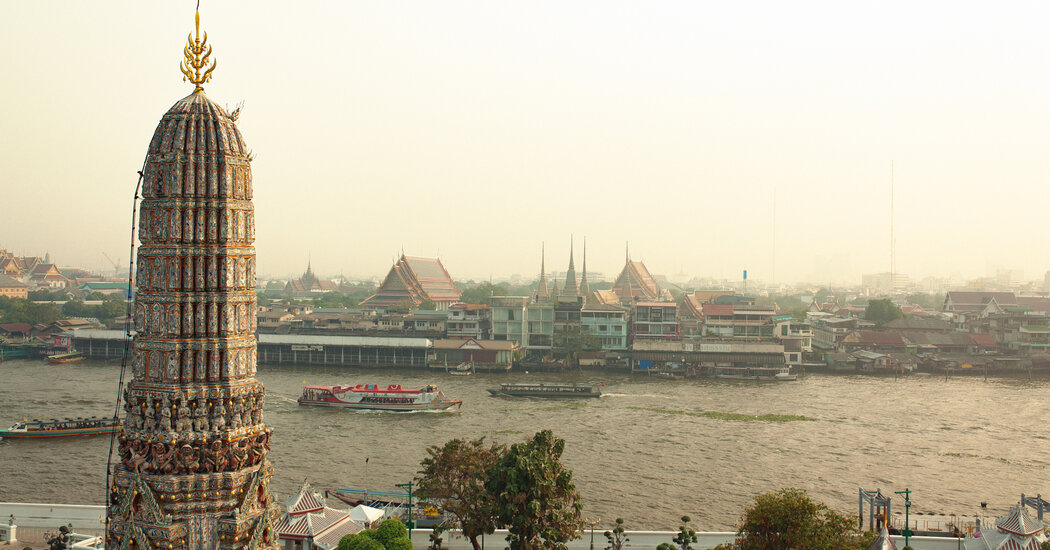Welcome to T Wanderlust, a new travel newsletter from the editors of T Magazine. Twice a month, we’ll recommend global destinations and hotels worth visiting. Sign up here to find us in your inbox every other Friday, along with our T List newsletter each Wednesday. And you can always reach us at tlist@nytimes.com.
Curving along the eastern bank of Bangkok’s Chao Phraya River, from the temple-studded Rattanakosin district to the southern end of suburban Bang Kho Laem, Charoen Krung Road has experienced a creative renaissance in recent years. While the pandemic largely stalled developments in the Thai capital’s long-established cultural hubs of Sukhumvit and Sathorn, forward-thinking Thais fixed their sights on the city’s oldest paved road (finished in 1864) and recast it as a homegrown cultural destination.
When the design library and exhibition space Thailand Creative & Design Center moved into the Art Deco-styled Grand Postal Building in 2017, an influx of Thai chefs, designers and curators started taking over the often-dilapidated shophouses that lined the alleys and subdistricts branching off Charoen Krung. Some were revamped into contemporary art centers such as Charoen 43 Art & Eatery or trailblazing restaurants reinterpreting Thai cooking (the new Small Dinner Club by the former monk Sareen Rojanamatin and drinking-food-centric Samlor among them), while many others drew inspiration from the Thai-Chinese kitchens, local craftspeople and neo-Classical architecture that have defined the area since the mid-19th century. The opening of two MRT subway stations on Charoen Krung in 2019 has only added to its accessibility.
“Young Thais have an increased interest in old buildings and historic architecture,” says the florist Chitchanan Sukpong, 27, who opened her wood-veneered flower boutique and wine bar Mala on Charoen Krung Soi 43 last March. “These buildings have a unique character that’s impossible to recreate.”
Despite Charoen Krung Road’s rapid gentrification, a trip down this storied four-mile artery — which snakes through historic Chinatown, multiethnic Bang Rak and the delightfully walkable Talad Noi area — can still feel like a stroll through the Bangkok of the past. Here, far away from the gleaming skyscrapers, you’ll find pushcarts hawking khanom (traditional Thai sweets made from coconut and rice flour) and century-old Chinese shrines swirled in sweet-smelling incense. Mom-and-pop restaurants serve the same noodle…
Click Here to Read the Full Original Article at NYT > Travel…
